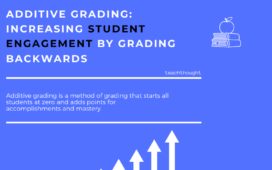Overcoming Challenges In L&D Evolution
The Learning and Development (L&D) landscape is poised for transformation as we step into 2025. But with great change comes great challenges.
Before we dive into the exciting trends reshaping the industry, let’s address the obstacles that L&D professionals must overcome to keep pace with the evolving demands of the workplace.
Key Challenges L&D Will Face In 2025
1. Keeping Up With Rapidly Advancing Technology
The adoption of AI, AR, VR, and other technologies sounds transformative, but integrating them into learning programs is a significant hurdle. Limited budgets, steep learning curves, and a lack of internal expertise can slow down implementation.
To overcome this, L&D professionals must prioritize their own learning to stay ahead of technological advancements. After all, if we don’t understand the tools, how can we use them effectively?
2. Proving ROI And Measuring Impact
One of the toughest challenges in L&D has always been quantifying its impact. Business leaders demand data that ties learning initiatives directly to outcomes like productivity, employee retention, and revenue growth. However, measuring these metrics remains elusive.
In 2025, L&D teams will need to focus on linking training programs to clear KPIs and leveraging analytics tools to demonstrate tangible results.
3. Engaging A Diverse, Multigenerational Workforce
The modern workplace includes employees spanning four generations—Gen Z, millennials, Gen X, and baby boomers—each with unique learning preferences. Balancing gamified, tech-driven learning for younger employees with traditional approaches for older workers is a juggling act.
A blended learning strategy that incorporates diverse formats will be essential to engage all learners effectively.
4. Combating Learning Fatigue
The explosion of digital learning resources has overwhelmed employees. Many feel inundated with endless modules, webinars, and online courses, leading to disengagement.
L&D teams must prioritize high-quality, relevant, and concise learning experiences, favoring microlearning and just-in-time resources over lengthy, one-size-fits-all programs.
5. Striking The Right Balance Between Automation And Human Interaction
Automation is transforming L&D, making processes faster and more efficient. However, learners still value mentorship, personalized feedback, and meaningful interactions.
The challenge lies in blending the efficiency of AI-driven learning with the human touch that fosters deeper engagement and emotional connection.
6. Learning Integrated With Employee Experience
Employees’ career goals and growth aspirations must be tied to learning programs and learning strategies.
The future won’t be all about acquiring new skills or having new-age skills. It must be about how learning opportunities blend into the broader fabric of the workplace experience.
Emerging Trends Shaping L&D In 2025
Despite the challenges, 2025 is brimming with opportunities for L&D to thrive. Let’s explore the trends that are set to redefine how learning happens.
1. AI-Powered Personalization And Learning Assistants
AI is no longer just a buzzword—it’s becoming a cornerstone of personalized learning. By analyzing performance data, AI can deliver tailored learning paths, recommend content based on individual needs, and provide real-time feedback.
This trend promises to make learning more engaging, efficient, and effective. Employees get what they need, when they need it, driving both individual and organizational growth.
Implementing AI-powered chatbots or virtual assistants that support on-the-job learning and on-the-job support will be critical.
2. Immersive Learning Through AR, VR, And XR
Augmented Reality (AR), Virtual Reality (VR), and Extended Reality (XR) are turning learning into an immersive, hands-on experience. From simulating dangerous work environments to practicing soft skills in virtual scenarios, these technologies offer unparalleled opportunities for experiential learning.
As the cost of these technologies continues to drop, more organizations will integrate immersive learning into their L&D strategies.
3. Upskilling For Sustainability And Green Jobs
Sustainability is taking center stage, with businesses aligning their goals to ESG (environmental, social, and governance) frameworks. As industries pivot toward greener practices, L&D will play a crucial role in reskilling employees for eco-friendly roles and sustainable business practices.
This shift is about preparing teams not just for compliance but for leadership in a green economy.
4. Social Learning And Peer Collaboration
The power of peer-to-peer learning and social collaboration is becoming undeniable. With hybrid work models here to stay, organizations are investing in platforms that facilitate community learning. Employees can share knowledge, mentor each other, and collaborate on problem solving.
In essence, the collective intelligence of an organization becomes its most valuable asset.
5. Employee-Generated Content
Platforms where employees are encouraged to create content through a mutual showcase of their knowledge and experiences will be on the rise. Investment in such platforms will be key. Such platforms must be made easily available to every employee.
6. Mental Health And Well-Being In Learning
The link between mental health and productivity is well-established, and 2025 will see a greater focus on integrating well-being into L&D strategies. Programs focusing on stress management, emotional intelligence, and resilience will complement professional skill development.
This holistic approach ensures employees are not just skilled but also balanced and thriving.
Navigating The Road Ahead
The future of L&D in 2025 is a mix of challenges and exciting opportunities. To navigate this dynamic landscape, L&D leaders need to:
- Embrace a growth mindset. Stay curious and committed to learning, just like your audience.
- Leverage data. Use analytics to measure impact and fine-tune strategies.
- Be agile. Experiment with new formats and technologies, and iterate based on feedback.
- Focus on the learner. Keep your audience’s needs at the core of your decisions.
Conclusion
As we look ahead, it’s clear that L&D is no longer a support function—it’s a strategic driver of business success. By addressing the challenges and embracing the trends, L&D professionals can shape the future of work, empowering employees and organizations to thrive in 2025 and beyond.
With AI, generative AI, highly hybrid models, and a focus on emotional intelligence driving learning intelligence, the future is all about deeper personalization, collaboration, and empowerment, all leading to a whole new level of enablement.
Learning and visual architects at Tesseract Learning are constantly innovating and reinventing their approaches to design, develop, and deliver effective learning programs. We are leveraging our powerful new learning platform, KREDO, to create efficiencies across the training life cycle and deliver optimal learning experiences. If you wish to know how our services, KREDO Learning Platform and the Prodient.io authoring tool, can help your organization in developing exciting training programs to upskill your employees, contact me, or leave a comment below.
















